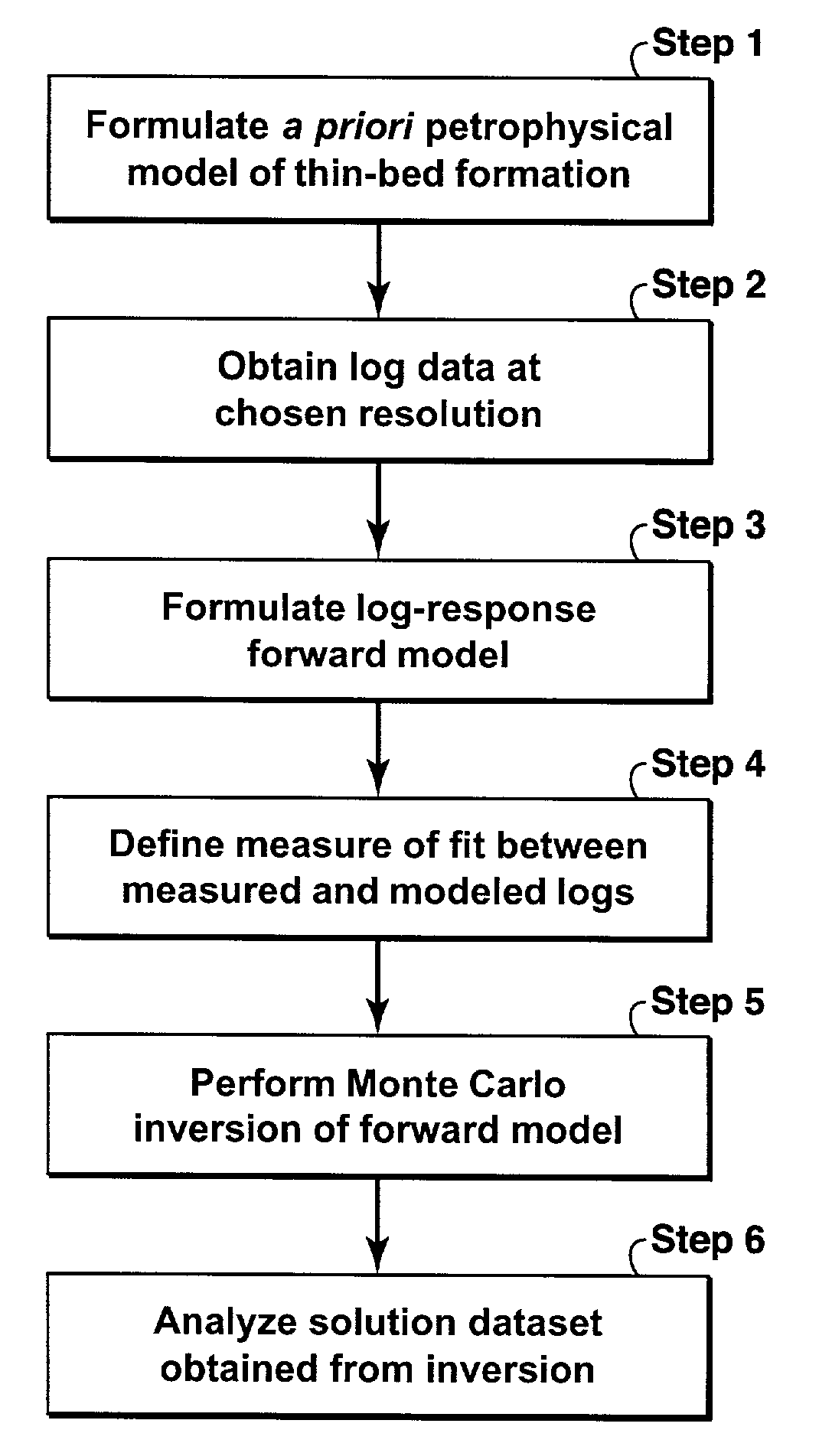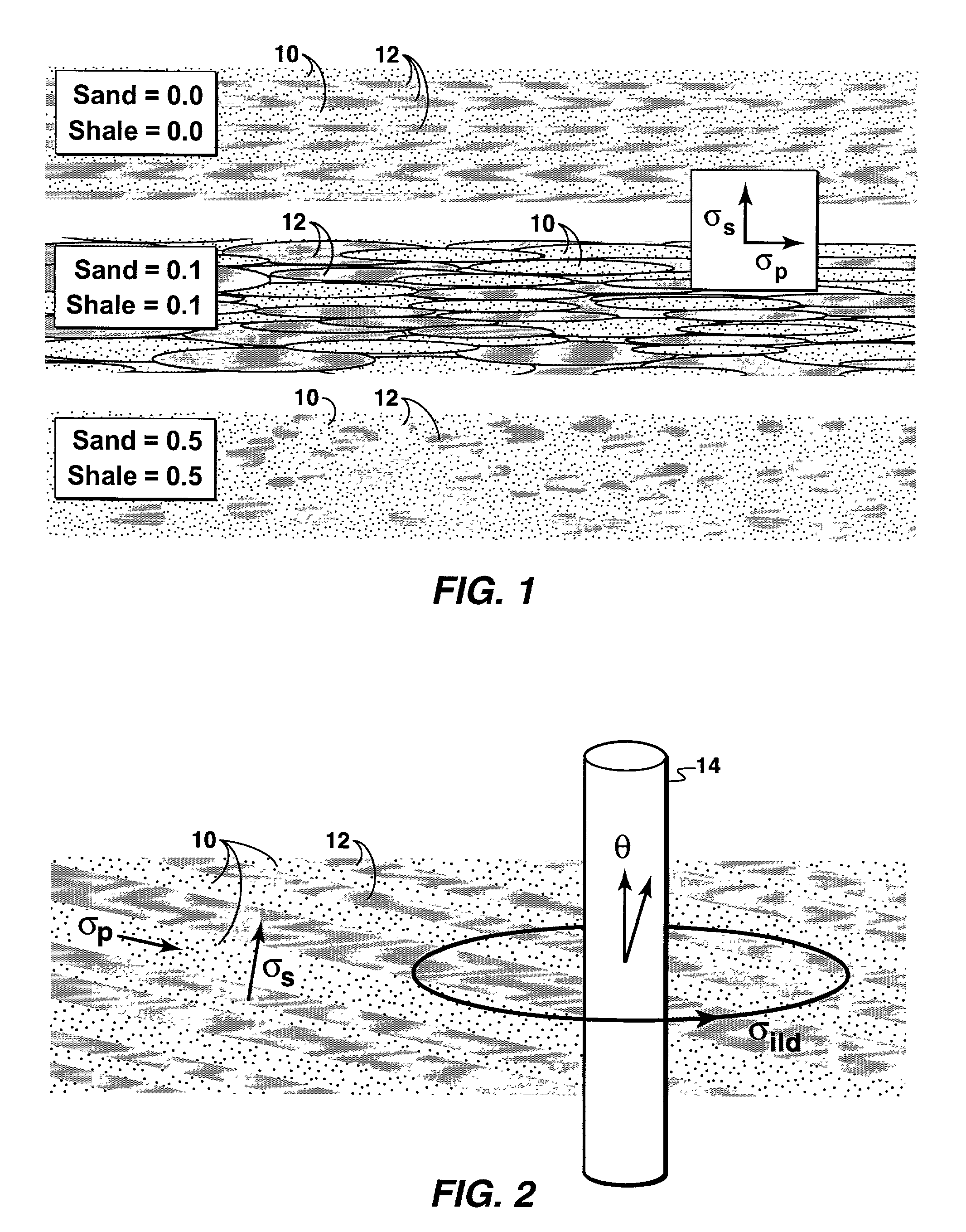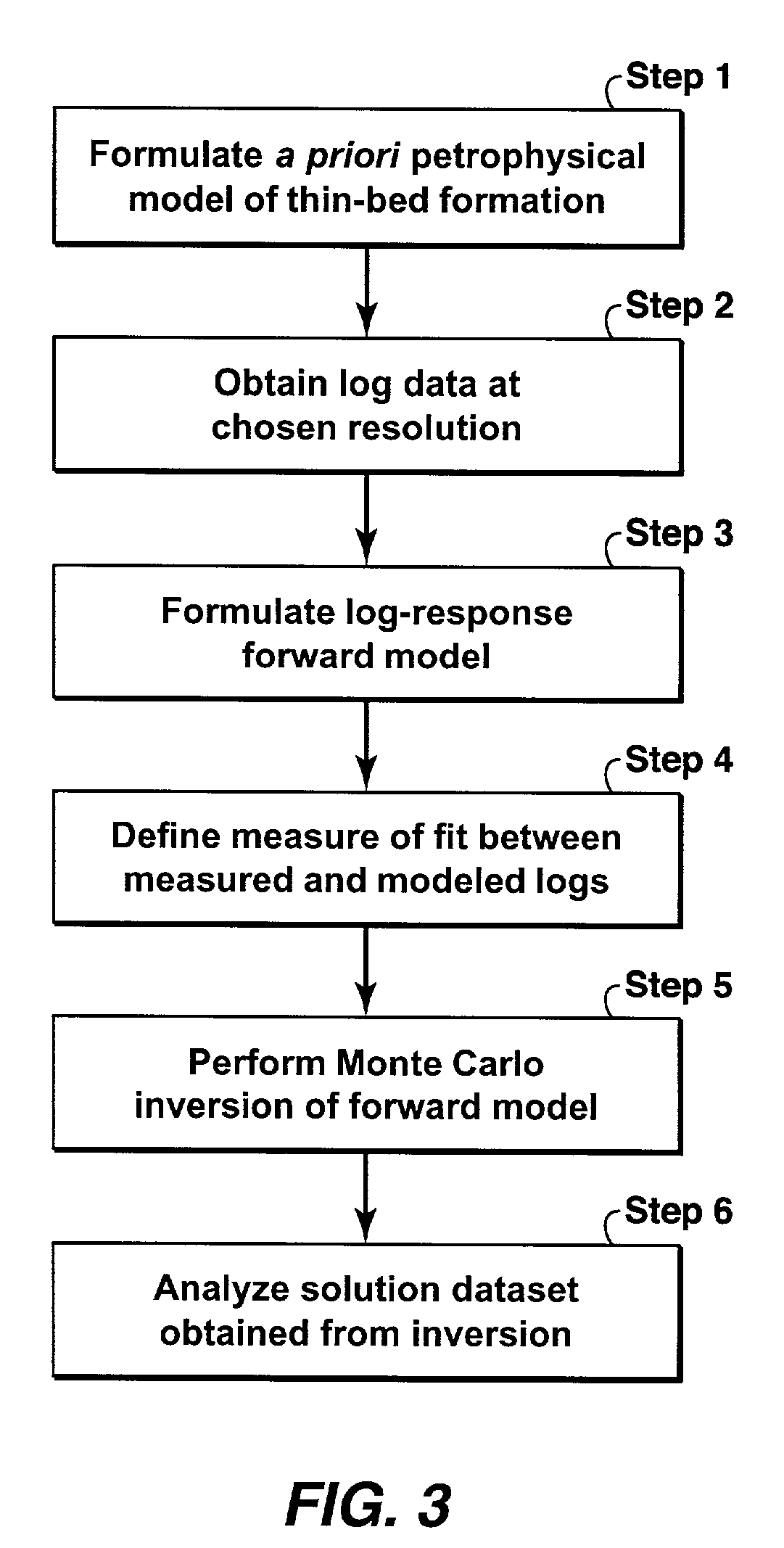Volumetric laminated sand analysis
a laminated sand and sand analysis technology, applied in the field of well log data analysis, can solve the problems of low hpv estimates, less certainty in the estimation of hpv in thinly bedded reservoirs, and significant risk of overestimating economically significant hydrocarbon reserves
- Summary
- Abstract
- Description
- Claims
- Application Information
AI Technical Summary
Benefits of technology
Problems solved by technology
Method used
Image
Examples
Embodiment Construction
Introduction
[0024]Prior to describing the VLSA methodology, certain basic principles of log analysis will be described. Petrophysical properties are intrinsic properties of a volume of rock, which have well-defined values independent of measurement techniques. These properties may be isotropic (i.e., independent of orientation) or anisotropic (value depends on orientation within the rock volume). Examples of isotropic petrophysical properties are total porosity and water saturation. Examples of anisotropic properties are conductivity, acoustic velocity, and permeability. In idealized cases, the isotropic petrophysical properties of a thin-bedded rock volume can be inferred from the corresponding properties of the individual beds via simple averaging relationships known to those skilled in the art. For anisotropic properties, such relationships are more complex.
[0025]Log responses are estimates of petrophysical properties as measured by well logging tools. These responses depend in a...
PUM
 Login to View More
Login to View More Abstract
Description
Claims
Application Information
 Login to View More
Login to View More - R&D
- Intellectual Property
- Life Sciences
- Materials
- Tech Scout
- Unparalleled Data Quality
- Higher Quality Content
- 60% Fewer Hallucinations
Browse by: Latest US Patents, China's latest patents, Technical Efficacy Thesaurus, Application Domain, Technology Topic, Popular Technical Reports.
© 2025 PatSnap. All rights reserved.Legal|Privacy policy|Modern Slavery Act Transparency Statement|Sitemap|About US| Contact US: help@patsnap.com



